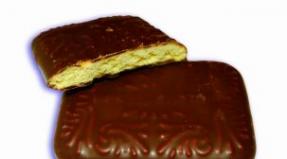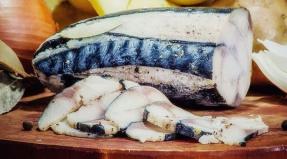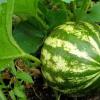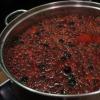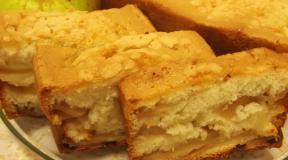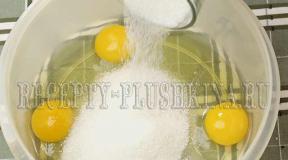How long the honeycomb can be stored. How can you store honey in combs for a long time at home?
Modern beekeeping is unthinkable without a large number of combs for various purposes. On large bee farms and during the migration, their supply should be two to three times higher than the average need of a bee colony. Reserve combs are always needed in small apiaries.
Honeycombs can be divided into 10-15 groups: nesting and for honey, for bee or drone brood, for stocking up feed, empty (dry), of different ages, etc. For example, in early spring, honeycomb frames well filled with food are needed: later they will be required to expand the nest and brood. With the advent of a bribe, they are needed to harvest honey, during the same period, bees build new honeycombs. By the end of summer in the hives and in the warehouse there should be stocks of forage frames, variously filled with honey, necessary for the wintering of families.
The bees of a strong family protect the honeycomb frames well from pests, mainly from the caterpillars of the wax moth. In addition, an appropriate microclimate is formed in their nest for their long-term storage. But if the combs are outside the hive, the beekeeper must protect them from damage.
Before human intervention in the life of a bee nest, bees and wax moths lived in ecological balance. In large hollows, you can often see how in one part the family develops successfully, while in the other, the moth dominates the old combs. At first glance, this is a pest, but in fact, its larvae help bees, gnawing old combs with all pathogens, and are selecting, destroying weak colonies.
With the advent of frame beekeeping and the need to store combs outside the hive, problems with wax moths arose. For example, in the United States, the annual damage from this pest exceeds $ 4 million; in Bulgaria, it annually destroys 20-30 tons of raw wax.
Factors affecting the safety of combs
1. Live individuals. These are large and small wax moths, various beetles, rodents, birds, bee-thieves, as well as various fungi and microorganisms.
2. Climatic conditions. These are conditions of high humidity and high temperatures. To preserve the honeycomb, all of the above factors must be eliminated. But the biggest threat to frame conservation has always been and will continue to be large and small wax moths. Therefore, beekeepers who want to know how to store combs need to learn the biology of wax moth development. The development of the wax moth is influenced by the ambient temperature. At a temperature of + 24- 27 degrees, the development of moths from testicle to butterfly takes only 5-8 days. Each butterfly is capable of laying from 300 to 3000 eggs, depending on external conditions. At a temperature of +10 - 16 degrees, the period of development of moths is only 35 days. And at temperatures less than + 9 ° C, the development of moths stops. From all this it is clear that the moth poses the greatest threat to the storage of combs in summer. The development of the wax moth is also suspended when there is sufficient air circulation around the combs that are stored.
For example, it is worth pushing the frames in the honeycomb storage a few centimeters apart, and the development of the moth stops. But in a closed space, with stagnant air, at temperatures above +15 degrees, ideal conditions are created for its development.
We store honeycombs correctly
In large apiaries
Before storing the combs for storage, the bars of the frames are cleaned of propolis, diarrhea stains and wax build-ups. If the frames are removed for storage after the honey is pumped out, then they are first given to the bees for drying, otherwise the honey residues in the cells of the combs can sour or crystallize, which will lead to the deterioration of these combs and a sharp reduction in the honeycomb supply in the apiary.
The cells taken for storage are treated with sulphurous gas, for which a powder of combustible sulfur is burned in the room (50 g of sulfur per 1 m3 of the volume of the room). When carrying out such processing, it is necessary to strictly follow the safety regulations. You should not store honeycombs with bee bread, which is not covered with honey and is not sealed. Such perga quickly grows moldy and becomes unsuitable for feeding to bees. To prevent the frames with an open bee bread from becoming moldy in winter, in autumn the open bee bread is covered with powdered sugar or poured over with thick sugar syrup with the addition of vinegar essence. Frames with bee bread are grouped separately so that, if necessary, they can be quickly found for setting in the nests. You should also not leave for storage those cells that are stained with diarrhea or contain unsealed honey. Honeycombs stained with diarrhea contribute to the spread of bee diseases, and unsealed honey turns sour or crystallizes in the cells during wintering.
Disinfection of honeycombs and methods of dealing with wax moths

Disinfection can be preventive, ongoing and final. To prevent the development of diseases in the apiary, preventive disinfection is carried out. When an infection occurs, along with treatment, current disinfection is carried out. The final one is a set of measures aimed at restoring the health of the bee colony after the destruction of the focus of the disease.
It is imperative to disinfect new combs, as well as those that were used in other apiaries. To do this, in good weather, the honeycomb must be laid out on the grass and filled with clean water on both sides, leaving it for an hour. After that, the honeycomb is poured with a solution of 4-10% formalin with the help of a watering can, leaving for 4 hours (it is possible until the morning). Then the formalin must be removed, the cells are thoroughly rinsed and dried in the shade.
In addition to diseases, there are other dangers that threaten the normal functioning of bees. For example, a wax moth, which can lead to the extermination of an entire hive. If honeycombs are damaged by wax moth, they must be kept at a temperature of + 50˚C for an hour, or subjected to cold treatment (-10˚C) for 2 hours.
The frames should be stored in a well-ventilated area, suspended at a distance of about 5 cm from each other. Of the chemicals used are thymol and axomolin. Thymol is placed in bags made of 2-3 layers of gauze, which must be removed from the hive if the temperature in it reaches 26 ˚С. When using axomolin, the honeycombs are placed in the hive, covering them on top with the material with the preparation (at the rate of 1 tablet for every 10 frames). The body, including the tap hole, is covered with polyethylene. After a day, the hive must be thoroughly ventilated.
Storing cleaned honeycombs
If not properly cared for, the honeycomb can be damaged by mold, mice, wax moth, and deteriorate due to dampness. First, the combs are sorted, and those that are suitable for further use are cleaned of wax. For storage, choose a dry and well-ventilated place. The optimum temperature is considered to be 1-10 ˚С, because at higher, there is a possibility of spreading wax moth. The honeycomb can be hung by the hangers on parallel slats, or stored in the hives, taking into account the measures of protection against the ingress of rodents. To protect against moths, the room in which the combs are stored is fumigated with sulfur, and grass with a pungent smell or orange peels are laid on the bottom of the hives. Some beekeepers use garlic for this purpose. To protect the frames with bee bread from mold, sprinkle them with powdered sugar.
Disinfection of frames

A wax melter can be used to disinfect the frames. Water is poured into the space between the walls for 2/3 of the total volume, frames are placed in the cassette (this way you can disinfect any inventory). The steam generated during the boiling melts the wax, which flows into the sump. After that, the steamed frames must be mechanically cleaned.
Honeycombs are also disinfected using chemical solutions. Old combs, combs with moldy perga, fermented honey, damaged by rodents, and also those with dead bees cannot be disinfected.
For prevention, you can use a 5% solution of soda ash, or 1.3.10% hydrogen peroxide. When a disease occurs, a combination of 10% hydrogen peroxide and 0.5% formic acid is used, as well as betsan, diluted 1: 5.
Formaldehyde vapors can be used. Glassware is placed in the hive with 45 ml of formaldehyde, 20 ml of pure water and 30 g of potassium permanganate. The hive is closed so that there is no air access. After two hours, the dishes must be removed, and the frames should be sprayed with 5% ammonia solution. Preventive disinfection is the easiest way to keep your bee colony healthy. Therefore, the beekeeper should take these measures responsibly and carry out them regularly. Otherwise, the consequences will require much more time and money.
How to protect honeycomb from wax moth using folk methods?
Salt
Wax moth, if not taken care of, can destroy the entire honeycomb supply. So, after you have pumped out the honey and released a significant amount of combs, dry them. Take a conventional sprayer UOP-5, which our industry produces to combat agricultural pests, in particular the Colorado potato beetle, fill it with a saturated salt solution and sprinkle the honeycomb on both sides. After the water has evaporated and the honeycomb is covered with light dry salt, shake each of them, sprinkle excess salt, hide them. In such "salty" combs, the moth will not start, and in the spring, when the combs need to be placed in the hives, sprinkle them with water and then it is unnecessary to give the bees salted water (5 g per liter of water). Such an event completely preserves the honeycomb, provides the need of the bee colony for salt. But at the same time, the wire within the framework must be stainless or chrome-plated, otherwise it will rust. In this productive way, you can process up to a thousand frames in an hour.
Vinegar

It is necessary to store combs in empty hives, tightly closing the entrances with tin latches or paper corks. Put a vessel with a capacity of 50-100 milliliters at the bottom of the hive, pour acetic acid into it, place it near the frame and close the hive. It is advisable to put plastic wrap on its ceiling in order to slow down the rate of release of acetic acid vapors. On a hive, 4-5 tablespoons of acid are spent at a time. You can use vinegar essence or regular vinegar instead, spending more.
The acid does not give any harmful effects for bees, as it evaporates quickly. Before putting the honeycomb on the bees, it is advisable to ventilate them for one to two hours. Bees readily accept such combs.
Sandy immortelle (immortelle)
So that the wax moth does not damage the honeycomb, pour a layer of 1.5-2 cm thick sandy immortelle (immortelle) inflorescences dried in the shade under and on them, tightly close the box or hive in which they are stored, and place in a dark, dry and cool place ...
Drafts
It is best to store combs in tightly closed boxes (hive enclosures, etc.). To prevent moths from entering the capacity at the egg or caterpillar stage, the honeycomb is disinfected by placing formalin in a box at the rate of 50 g per 1 cubic meter of volume. Good results are obtained by pollination of combs with ectobacterin, which does not harm bees and humans, but has a detrimental effect on the moth.
You can keep the honeycomb open in drafts by placing them at a distance from one another. Most beekeepers keep their combs in the attic where they are well ventilated. In drafts, the moth does not damage the honeycomb and they can be left for the winter, separating those with bee bread. The latter are covered with powdered sugar and kept at a positive temperature, preferably below 10 ° C, because under such conditions the moth already dies.
Water
There are two ways to store honeycombs without bees:
- During the day, soak the honeycomb in water (preferably rain or river water), pump it out on a honey extractor and dry it in the air. There will be no moth, as it damages the combs, which have already had a brood.
- Dry honeycombs can be stored in a whole plastic, tightly tied bag. This method is simpler, but the first is beneficial, since the honeycombs are kept in the air, and there is no ventilation in the bag.

S. Angelov
It is very useful to pump out unsealed honey from low-copper combs when storing combs with feed in the wild. This operation takes almost no time and is performed simultaneously with cell sorting. I use the pumped-out honey to replenish food reserves, but if there is a honeydew in it, I substitute this frame for the bees in the spring.
It is also helpful to disinfect the combs from the occasional wax moth larvae. With a sharp object, I open the cells on which I notice the cobweb or the moves already made by the larvae (it's good if you can find and eliminate the caterpillars, but this is not necessary). I sprinkle suspicious honeycombs with honey syrup or grease with creamy honey, then put them in the hive in the center of the nest for several days. The bees diligently clean and repair damaged cells, after which the cells can be sent for storage.
To protect from spoilage, sprinkle bee bread with a small layer of powdered sugar, sifting it through a thick sieve. If the bee bread is only on one side of the honeycomb, then the operation is simple. If it is located on both sides, then when processing the second side, I slightly tilt the frame so that the powder does not fall out.
Beekeeper
The coolest way to store honeycombs and protect sushi from mold and mish. This is the simplest and not burdened with special means method. The thing is that moth larvae are used to living at a certain temperature and without drafts, and in this case we do the opposite. The bottom line is this: if you have few wax frames, and there are plenty of cases, then you need to arrange the sushi more freely in them, for example, through one, then just like that - not covered with anything, put these cases in a cool, dry place or just under a canopy on street, so that the breeze blown through. That's all. Oh yes, I almost forgot ... It is still necessary sometimes, for example, passing by ... to see if everything is good there or not ... just to be on the safe side ... the above methods.
Alex

I use, as a preventive measure, "antimole" or whatever comes in the store, but after pumping out the honey, the frames are not in the hive. I heard that moths don't like drafts. For me, after pumping out, the buildings and shops with frames are in the hayloft in a draft, the bees dry them. For storage, I pack it in plastic wrap (sleeve) and put some kind of "antimole".
Pillar
A leaky hive is always preferable for moths, but the main thing, of course, is the cracks for laying eggs. Weak families do not have time to clear the trash on the bottoms, and this is the most joy for moths. I had a real "epidemic" of moths the year before last. fought all last year. in this it seems so far I am winning. lost 112 frames in 2 years. most of which the truth was needed immediately without being greedy in the overheating. greed in mine is one of the reasons - I tried to clean the affected frames, process them with vinegar and turpentine in pairs, and even freeze them in the freezer (I calculated this advice on one of the forums). noticed that the most affected families were in poor quality hives. caulked the holes and immediately the result. apparently it is not always convenient for her to climb into the entrance.
In medicine, there is a whole section dedicated to honey - apitherapy. Honey is a unique natural substance with rare medicinal properties, known and widely used since antiquity. Almost all waste products of bees are useful for human health, and comb honey is especially useful. In addition to the healing effect directly from the honey itself, chewing the wax from which the honeycomb is made has a beneficial effect on health.
Benefits of honey combWhen chewing honeycombs, the body is saturated with vitamin A from them, the teeth are cleaned and gently whitened, and the oral cavity is disinfected. Honey itself is very beneficial for athletes, as it contains fast-digesting carbohydrates. Therefore, on its basis, special drinks are made to quench thirst before and after training.
Honey stimulates blood formation, improves the activity of the central nervous system, normalizes the permeability of blood vessels, increases resistance to infections and accelerates the production of antibodies. Chewing a piece of honeycomb helps with ARVI and throat diseases, stimulates digestion.
It is very important to use properly preserved honey in combs in order to only improve health, not harm.
- The storage temperature should be 5 - 10 ° C. A temperature exceeding this value leads to acidification of honey, and too low or negative one destroys many amino acids and vitamins that make up the product.
- The air humidity in the storage room should be below 21 ° C. Failure to comply with the first two points leads to the beginning of honey fermentation.
- Honey perfectly absorbs odors, so it should be stored in an airtight container. Strongly odorous foods should not be present nearby.
- The room should be rid of insects (pest control) or rats (vermin control).
- Potatoes, onions, cabbage, many fruits, especially bananas, should not be stored in combs next to honey; petroleum products and other chemicals.
- The room should be chosen so that it can be regularly ventilated.
- It is better if the room or container with honey is darkened or covered with something dense and opaque. The fact is that in the light, many useful vitamins of the product are destroyed, and the healing properties are lost.
- The honeycomb should be stored in clean and dry containers. It is better that they are made of glass or aluminum.
Because of its qualities, honey is a very valuable product, but it is also a strong allergen, therefore, before treating with it, make sure that you are not allergic to it.
Good afternoon, honey lovers! In the spring, a new shopping center was built in our city, where my wife dragged me on the very first day of opening. Seeing a shelf with honey products, I decided to ask the price.
Nearby, a woman was scolding the administrator that they had put honey in the refrigerator. I began to argue with her, but only advised me to put him in the cold at home.
It is known that during storage of vegetables, fruits and other products containing vitamins, their supply is steadily decreasing. The same cannot be said for honey. Vitamins are perfectly stored in it for a long time.
Subtleties and features of the storage process
But even such a product as honey must be stored properly.
The main condition that affects the quality and useful properties of honey is temperature.
It is best to store honey at temperatures from -5C ° to + 20C °.
Advice!
It is undesirable to overheat honey. When heated above +40 C °, honey loses some of the enzymes and vitamins, and becomes just a sweet delicacy. Cooling honey affects its quality to a much lesser extent than heating it.
Frequent changes in the storage temperature of honey can lead to uneven crystallization.
Another important condition for storing honey is container. Since honey is hydroscopic, it actively absorbs moisture from the environment. This leads to an increase in the mass fraction of water in honey, its fermentation and spoilage. Therefore, honey must be stored in a tightly closed container.
Tight-fitting glass dishes or willow barrels are best suited for storing honey (conifers, oak, etc. are absolutely not suitable for storing honey).
Honey can be stored in earthenware, enamel or plastic dishes, but it is important to remember that untreated clay absorbs moisture, and plastic can be unstable to the somewhat aggressive composition of honey (you can only use plastic dishes for food), iron dishes can also react with the substances included in the composition of honey.
It is categorically impossible to store honey in galvanized and copper containers, as honey will enter into a chemical reaction with them and can become poisonous. It is important to remember that sunlight is extremely harmful to honey - it loses vitamins and enzymes, while retaining its taste and color.
Ideal storage conditions for honey: cool, dark place in a tightly closed glass container.
Shelf life of honey
Usually manufacturers indicate on the packaging the shelf life in accordance with GOST (GOST 19792-2001 "Natural honey" and GOST R 52451-2005 "Monofloral honey") - 1 year. But this does not mean that after a year has passed, honey becomes unusable.
Attention!
The shelf life of natural honey, subject to the storage conditions, is unlimited. Due to its preservative properties, natural honey retains its taste and useful properties for a very long time.
Some experts believe that over time, when stored properly, the honey tastes even better and the aroma is subtler due to the honey's ripening process. It is known, for example, that monks in Russia preferred aged honey 2-3 years old.
And in hives of wild bees honey is stored for years and the age of a bee colony can be recognized by the color of mature honey, as by the rings on a tree.
source: www.berestoff.ru
Storage container
Honey is stored only in immaculately clean glass or aluminum containers. You cannot pour honey into an unclean container under the pretext that honey was stored in it. A film of old honey promotes the fermentation of new honey, as a result of which the taste and smell of honey changes.
Honey should not be stored in containers made of zinc, copper, lead or alloys of these metals, as the acids contained in honey form chemical compounds that can cause severe poisoning.
Iron containers are also contraindicated, since due to the corrosion of iron as a result of prolonged contact with acids in honey, it acquires an unpleasant taste and
smell.
Honey jars should not be kept together with strong-smelling products (paints, fuel, essences), as honey quickly perceives odors. An open vessel with honey should not be placed next to hygroscopic substances that help to maintain moisture in the air (salt), as this causes accelerated fermentation of honey.
Honey packaged in glass jars should be stored in dark rooms, as light degrades the quality of honey. The honey darkens quickly. To liquefy crystallized honey, a vessel with honey is kept in hot water, never directly over the fire.
Attention!
We only need to heat the amount of honey we need. The heated honey begins to ferment quickly, and its quality deteriorates.
The presence of nutritional and medicinal properties in honey depends on the correct storage. It is known that in combs and under certain conditions honey can retain its nutritional properties for centuries. But for medicinal purposes, only fresh honey is desirable, or at least honey with a shelf life of no more than one year.
Honey, especially honeydew honey, is hygroscopic: it has the ability to absorb moisture from the air and retain it. If stored improperly in high humidity conditions and in unsealed containers, honey can absorb up to 30% moisture. Such honey, when stored for a long time in a warm place and at a relative humidity of more than 60%, can ferment and sour.
Honey with a water content of 17.4% does not exhibit hygroscopicity at the same air humidity. Therefore, the veterinary and sanitary rules provide for the storage of honey in a clean, dry, cool, well-ventilated room with a relative humidity of 60% (at a temperature of no more than 20 ° C, if the humidity of honey is less than 21%; at a temperature not higher than 10 C, if the humidity of honey is more than 21 %) and always in the dark, since sunlight, direct sunlight and even diffused light have a detrimental effect on the antimicrobial properties of honey.
48 hours of continuous exposure of honey to sunlight completely destroys some enzymes, in particular, inhibin enzyme. Namely, this enzyme is credited with antimicrobial properties. Therefore, you need to be especially careful in storing and preparing honey for sale.
The storage room for honey should be isolated from poisonous, dusty, with a pungent specific odor, since honey easily perceives flour and cement dust, foreign odors from strong-smelling products such as fish, pickles, cheeses, sauerkraut.
Honey easily absorbs the smell of smoke, gasoline, kerosene, turpentine, pesticides, etc. The room where honey is stored protects it from insects.
At home, it is advisable to store honey in a cellar or refrigerator. Storage of honey at sub-zero temperatures (up to -20 ° C) is allowed. The medicinal properties of honey are not lost at the same time.
 Two layers of honey In the process of storing honey, sometimes two layers are formed - crystallized from below, and syrup-like from above - this indicates the immaturity of honey, its high humidity, but not always. So, if grape sugar - glucose - is contained in honey (even in mature honey) in small quantities, then during crystallization it settles to the bottom, and fruit sugar - fructose - above it. After mixing, such honey is allowed for sale.
Two layers of honey In the process of storing honey, sometimes two layers are formed - crystallized from below, and syrup-like from above - this indicates the immaturity of honey, its high humidity, but not always. So, if grape sugar - glucose - is contained in honey (even in mature honey) in small quantities, then during crystallization it settles to the bottom, and fruit sugar - fructose - above it. After mixing, such honey is allowed for sale.
For storing honey, glass, enamel or nickel-plated dishes with dense plastic or metal lids are the most hygienic and convenient:
- wooden barrels (barrels) of beech, birch, willow, cedar, linden, plane trees, aspen, alder with a moisture content of wood no more than 16%, that is, below the permissible moisture content of honey. Barrels made of coniferous trees are not suitable, since honey acquires resin sap during storage; you cannot store it in oak barrels: honey darkens;
- milk cans and flasks made of stainless steel, sheet steel, tinned food tin, aluminum and aluminum alloys;
- tin cans, coated inside with food varnish;
- glasses or tubes made of aluminum foil coated with food varnish;
- glass jars and other types of glass containers (so that glass jars do not crack, when filling them with liquid honey, insert wooden sticks that remain until crystallization is completed);
- casted or corrugated glasses made of pressed cardboard with moisture-proof impregnation;
- bags, cups and boxes from waxed paper, from parchment - for crystallized honey; from artificial polymeric materials, for use in food purposes;
- ceramic dishes covered with glaze from the inside. The container must be clean, odorless, hermetically sealed. It is allowed to use rubber gaskets.
It is contraindicated, and even dangerous, to store honey in galvanized and iron containers, as this produces toxic substances. When honey is stored in a copper container, it becomes bluish-green, in an iron container - dark red. It is forbidden to store honey in containers made of synthetic materials.
It is impossible to warm honey, as this destroys all the constituent parts of honey, the color changes - the honey darkens, the aroma disappears, bactericidal substances, vitamins, and enzymes are destroyed. This process is observed at normal storage temperatures, but accelerates at higher temperatures. Partial decomposition of sugars occurs, and oxymethylfurfural is formed.
As a result, honey loses its biological and many medicinal properties, becomes a simple mixture of nutrients, mainly carbohydrates.
Studies have shown that honey should not be heated at all, even stored at temperatures above 20 ° C.
Heating to a temperature of 35-40 ° C is already unfavorable for him - a complete deactivation of vitamins occurs, and starting from a temperature of 50 ° C honey quickly loses its bactericidal properties and aroma, 60 ° C - enzymes, 80 ° C - sugars are destroyed and a significant amount is formed oxymethylfurfural.
Long-term heating of honey leads to an almost complete loss of antimicrobial properties.
When honey is stored for more than one year, there is a gradual weakening of its biological activity. For example, when honey is stored at a temperature of 23-28 C for 8-12 months, its antimicrobial properties, the amount of glucose and fructose decrease by 5-10%, vitamins BXi B2 and C by 10-20%, the diastase number almost halves, the amount of sucrose and acids increases. The higher the storage temperature of honey, the more significant the change in its properties.
Source: www.pchelovod.com
How and where to store it correctly
The place where honey is stored must have special conditions. For example, he does not tolerate the sun's rays, since they will heat the jar, and this will lead to the destruction of nutrients in it, including the enzyme inhibin, which is responsible for the antimicrobial properties of this product. Therefore, the best place to store honey is in a cellar or basement, if there is a suitable humidity level.
There is no difference in how to store linden honey and rapeseed honey. But honey with bee bread should be stored in a slightly different way.
For example, in order to maximize the shelf life of bee bread, it is necessary to dilute it with honey in a 1: 2 ratio and send it to a dark, cool room with a humidity level not 15%. But on the temperature and utensils where honey is stored, it is worth dwelling separately.
Watch a video about the secret of long-term storage of honey:
 How to store honey in combs Many people prefer to buy honey in combs. Of course, such a product is much more useful, but it requires special storage conditions. Therefore, it is very important today to know how to store honey in combs.
How to store honey in combs Many people prefer to buy honey in combs. Of course, such a product is much more useful, but it requires special storage conditions. Therefore, it is very important today to know how to store honey in combs.
First of all, it should be said that the natural "packaging" will not allow honey to crystallize for a whole year. But it can be affected by inappropriate humidity. So, before storing comb honey in a certain place, it is necessary to determine the degree of moisture in it.
If its level exceeds 60%, then the honeycomb may become limp, and if it drops below the optimum, then moth or mold may appear. Also important is the temperature, which should be kept in the range from 3 to 10 degrees above zero.
For those who do not know in what conditions to store honey, it is also necessary to understand that you cannot put fruits or vegetables near it, and especially bananas, and even more so harmful chemicals, since it easily absorbs third-party aromas.
watch a video on how to properly store centrifugal and comb honey:
Is honey kept in the refrigerator?
Many people are concerned about the question of whether honey is stored in the refrigerator.
In principle, honey can be stored in the refrigerator if you follow a few rules. So, this is quite acceptable if the temperature in the refrigerator is not lower than 5 degrees Celsius (as a rule, this temperature regime is observed on the door). You can also store honey in the refrigerator if it has a dry freeze function, otherwise you will have to check the moisture level in it and, if necessary, remove excess moisture from the walls.
Attention!
Before you put honey in the refrigerator, you should make sure that the dishes in which it is located are tight so that no foreign odors get inside.
How much can you store
There is still a lot of controversy around the question of how many years honey can be stored. Some are convinced that this unique product does not lose its beneficial properties for centuries. Others are sure that honey cannot be stored for more than a year, as harmful substances are formed in it.
Alas, it is not possible to prove this or that fact, therefore, thinking about how long honey can be stored, it remains to rely on your own knowledge and experience. For example, evidence of the eternal benefits of honey is the fact that archaeologists found honey in one of the Egyptian pyramids in the tomb of the pharaoh.
That is, even after several thousand years, honey did not lose its properties and was still suitable for consumption. Unfortunately, not everyone knows how long to store honey, and even more so they don’t realize that fermentation processes continue in the honey left for storage for a year.
Therefore, those who are not sure how much honey to store can be assured that aged honey is even more useful than fresh honey, and will yield to it only in the degree of aroma and appearance.
In what container (container) to store
It is important to know which container to store honey in so that it does not change its taste.
In addition to tightness, the material of the container is of enormous importance. So, there is nothing better and more correct how to store honey in dishes made of natural wood, including willow, linden, alder or birch.
But coniferous dishes are not suitable for such purposes. You can store honey in stainless steel, clay or ceramic containers.
Advice!
By the way, a clay pot is the optimal container for storing honey, because it is not capable of entering into chemical reactions, does not deteriorate, does not oxidize and maintains the desired temperature regime.
- metal containers (due to the oxidative processes of the metal, honey can absorb harmful substances and cause poisoning);
- plastic container (honey is an active substance that is capable of "pulling" chemical impurities out of plastic, so if you store honey in a plastic container, then no more than a year and only in a special food container).
What is the best way to store honey - everyone decides for himself, but the above facts cannot be ignored.
At what temperature to store
It is equally important to know at what temperature to store honey. So, the optimal temperature range for this product is from -6 to +20 degrees Celsius. Accordingly, for those who are convinced that honey cannot be stored in a refrigerator, we can say that honey should not be kept at room temperature.
Those who do not know how to store honey in an apartment should know that some of the vitamins in this product begin to rapidly deteriorate at temperatures above 20 degrees Celsius.
Another important condition for storing honey at home is not to change the temperature in order to prevent its uneven crystallization. That is, if a place has already been found where to store honey at home, then rearranging it to another place with a different temperature regime will certainly not be beneficial.
So, honey can really be stored for years without losing its beneficial properties. To do this, you just need to know how to store honey and find a suitable place for it. If this product initially has excellent quality, then over time it will change quite a bit, and then not from the quality side.
The honey is usually covered with a hard layer on top, as fructose, which is not sugar-free, rises over time. And besides, honey has been known to darken over the years. That's all the rules on how to store honey properly, all that remains is to enjoy the natural delicacy as long as possible.
Recently, honey in combs has become more and more popular, due to the higher concentration of nutrients in the composition and the lack of the ability to counterfeit it. It is impossible to buy a fresh product all year round, so you need to stock up on high-quality and natural honey for a year in advance. Next, we will talk about how to store honey in combs so that it does not lose its medicinal properties and how long it can be done.
Storage conditions for honeycombs: basic rules and recommendations
You can preserve the beneficial properties of honey if you follow all the rules and recommendations for its storage. You should not take a large amount of beekeeping product that the family will not eat in the current six months or a year. It is more troublesome to store such a product than liquid honey, which is familiar to many. However, all conditions can be met at home.
- The wax contained in the comb is hygroscopic and therefore does not like moisture. Excess moisture penetrates through the holes (caps) and is absorbed by the honey. As a result, the product begins to sour. A prerequisite for storage is a dry room with good ventilation.
- The quality of the product is negatively affected by sudden temperature changes. Honeycombs should be stored in a room with a stable temperature, the permissible amplitude of fluctuations is no more than 10 degrees.
- The beneficial properties of the beekeeping product can be preserved if they are not influenced by direct sunlight. Ideal storage conditions are when sunlight does not enter the room at all. From exposure to sunlight, the wax loses its properties, in addition, it transmits light through itself, which is reflected in the concentration of vitamins, minerals, organic acids, macro- and microelements in the composition.
- Do not store at low temperatures (in the refrigerator, in the freezer), especially with negative values. This is due to the fact that from low temperatures the wax becomes brittle and brittle, this often leads to cracking of the honeycomb and the product simply flows out.
- High temperatures also have a detrimental effect on quality. This is due to the fact that the wax softens as a result of thermal exposure, some of the beneficial properties evaporate.
Storage of honey in combs
The optimal conditions for storing honey within the framework are: a dry room with a permissible temperature of 8 to 30 degrees above zero. The amplitude of fluctuations should not exceed 10 units, otherwise it will negatively affect the quality. If the beekeeping product is stored in an enclosed space, it should be regularly inspected for the presence of wax moths that could harm the product.
Interesting: during the excavation of the Egyptian pyramids, honey was discovered in a frame, which has not lost its useful and taste qualities for millennia, it was even fit for consumption.
How much honey is stored in combs
How long can honey be stored in combs in an apartment so that it does not lose its useful and tasteful properties? If you observe the permissible temperature regime, the shelf life of the product is quite long. Experienced beekeepers claim that if the storage rules are observed, natural honey can be stored for years, decades and even centuries. But it is better not to abuse this, since it has been scientifically proven that the composition loses its antibacterial properties after one year by about 16%.
It is recommended to keep the honey product at home for no more than 2-3 years. If a person is not sure of the correct approach to storage, then it is better not to keep the combs for more than 1 year, it is better to eat them during the fall and winter. At room temperature, the shelf life of the frames is halved.
Store honey for no more than 2-3 years
How to store honey in combs at home
The most useful honey is the one that was harvested in the spring, but the conditions for its storage are more demanding. The optimal storage temperature is + 3-10 degrees. Temperatures above the established indicators have a detrimental effect on the composition, the chemical composition is poorer.
Important: the frames are like a sponge that absorbs all the smells of the environment, so there should be no products with a pungent smell nearby.
What utensils are best to use
Our ancestors used earthenware to store beekeeping products within the framework, which is practically absent today. The most affordable option is glass. This material is neutral, does not emit toxic and toxic substances, does not react with the contents. Its main drawback is transparency, which has a detrimental effect on the framework.
Frames are often sold in the markets in plastic containers. This option is only suitable for sales and short-term storage. This is due to the fact that under the influence of sunlight, plastic begins to release toxic substances. It is strictly forbidden to store honey frames in plastic containers for a long time!
It is forbidden to store honey in plastic containers!
Metal products are quite controversial. Many beekeepers use stainless steel cans to transport large quantities of beekeeping products. It is worth noting that during long-term storage in such containers, it oxidizes and deteriorates. Moisture in bee products leads to oxidation.
A worthy alternative to glass is wood. This is due to the naturalness of the product, the lack of transparency, as well as the fact that the product acquires the aroma and taste of wood. But you should refrain from using wooden dishes made from coniferous trees. They contain a high concentration of essential oils that will be released during the operation of the cookware.
What can spoil the product
The environment is aggressive, so there are factors that can hopelessly ruin the product:
- Mold affects honey if the room humidity is too low. In this case, it is almost impossible to revive honey, some will have to be thrown into the trash can, and the rest will be heat treated.
- Insects. When damaged by wax moths, the frames can be destroyed in less than a week. To prevent it, it is necessary to constantly ventilate the contents of the containers, the air temperature in the room should not exceed +10 degrees. In such conditions, the insect cannot live and develop, the moth dies.
- The enemy of any beekeeping product is the sun's rays, they destroy all healing properties. Storing honey in direct sunlight is prohibited.
- Humidity can also play a cruel joke, with a high level of humidity, honey begins to ferment and sour. It is not in vain that bees pay special attention to the arrangement of ventilation in their hive. Thanks to ventilation, an optimal level of humidity is achieved.
Important: products of natural origin can provoke an allergic reaction, for this reason, samples must be taken before use.
Framed honey is a unique beekeeping product that combines a high concentration of nutrients, excellent taste and the ability to store the product for a long time. It is not a problem to buy it, and the likelihood of acquiring a fake is excluded, it is simply impossible.
Prefer to consume unprocessed bee nectar? This is not surprising, because in this form the bee product brings much more benefit to your body, and the appearance of the nectar is quite original. At the same time, it is important to know how to store honey in combs at home. Improper storage of the treat will negatively affect the quality and freshness of the product.
Honey is inside the honeycomb, it is carefully sealed, and the presence of propolis completely protects it from the effects of pathogenic bacteria and microbes. Therefore, microbes are not enemies for a cellular product, high humidity in a room is much more dangerous. tends to absorb moisture, therefore, the development of the fermentation process is possible.
Let's consider what else can affect the quality of the bee product on the frame:
sunlight
Under the influence of ultraviolet rays, the beneficial components of the nectar lose their strength. With prolonged exposure of the frame to the light, the apiproduct becomes useless.
Wax moth
It develops very rapidly, in 5 days an adult larva grows from the egg, which is capable of causing serious damage to the combs. This insect is active in hot weather, the body length is about 2 cm. An adult insect does not pose a threat, moth larvae should be afraid, they are very voracious and eat honey, bee bread, wax.
Where to store combs with honey so that they are not damaged by insects? In order to avoid the attack of wax moth larvae, you need to keep the frames in a room with good ventilation, the air temperature should not exceed 10 degrees Celsius. Then there is no need to be afraid of gluttonous larvae.
Mold
Quite often, with improper storage, the honeycomb becomes moldy. This is due to frequent temperature changes, and as a consequence of the appearance of condensation. In addition, the room must be well ventilated. Honeycombs affected by mold must not be consumed.
It is interesting! The content of nutrients in a honeycomb product significantly exceeds their concentration in liquid nectar. This is due to the presence of substances such as bee bread, pollen, beading and propolis on the combs.
Distinctive storage feature
Unlike ordinary pumped honey, honeycomb nectar does not tolerate frequent changes in temperature and humidity. The wax absorbs moisture, the product begins to turn sour and deteriorate. In addition, the apiproduct must be protected from extraneous odors, it absorbs them quickly enough.
Where and what to store
Considering that the optimal storage temperature is 5-10 degrees, a refrigerator would be a suitable place in the apartment. Best of all on the warmest shelf, most often the refrigerator door, bottom shelf. In addition, a cold storage room, a basement, which is not always available for city dwellers, is suitable.
How to store honey correctly? It is recommended to pack the honeycombs in small portions in one row. Putting 1 frame on another, they can stick together, and then the integrity of the cells will be violated, the delicacy will flow out. For storage at home, choose glassware, glass does not react with other substances and protects against foreign odors.
The question is often asked - is it possible to store honey in plastic? Yes, you can, only it should be a food grade plastic container. An important condition is that the honeycomb nectar should be kept under a tightly closed lid. Someone advises storing the bee product in clay or wooden containers, but this method is not particularly popular due to the shortage of such containers.
It was found out where to store honey, there remains one more problem - how to protect honey from exposure to light, temperature extremes and odors. As it turned out, this is quite simple, in order to protect the honeycomb from sunlight, wrap the jars or containers with the delicacy with ordinary food foil, and secure it with tape around the perimeter. Such packaging will reliably protect the gifts of nature from light, odors and moisture.
There is another storage method - freezing. At the same time, the apiproduct retains all its useful properties and valuable components. It is worth considering that a very low temperature is detrimental to a bee delicacy; at minus 35 degrees, useful substances are destroyed. In order to defrost the seal, it must be placed in the refrigerator until it thaws completely, otherwise the wax will crack and lose its presentation. You cannot re-freeze the delicacy.
Shelf life
The eternal question - how long can honey be stored? You can often hear that a natural bee product has no expiration date. This judgment is partly true, the matured honeycomb nectar, not pumped out from the bee frames, can be stored for a very long time.
Another question is how many useful components will remain in the bee product after 2, 3 or 5 years? The answer is simple - any apiproduct, including comb honey, annually reduces the beneficial properties by 18–20%. Accordingly, in order to get the maximum benefit from a bee treat, it must be eaten for 1 year.
Advice: you should purchase beekeeping products exclusively from trusted suppliers or directly from beekeepers.
Many buyers believe that when purchasing a honeycomb bee product, they buy only natural honey. Unfortunately, this is not so! Avid beekeepers who seek to profit deliberately feed the bees with diluted sugar, and instead of natural nectar and pollen, they pack processed sugar into honeycombs. Of course, some of the nutrients get into such "honey", but you won't get much benefit.
Read also ...
- Recipes for making coffee with ice cream at home
- Strawberry panna cotta - a classic of world culinary What is panna cotta with strawberries
- Cream of curd cheese for cake - the best recipes for impregnating and decorating dessert
- Profiterole recipe and three original custard recipes Protein cream for profiteroles
